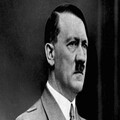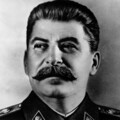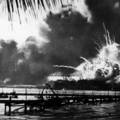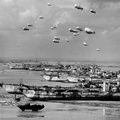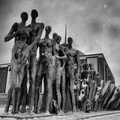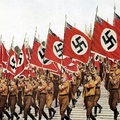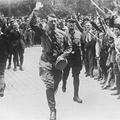Introduction for Essay
World War II, WWII, started in 1939 and ended in 1945, resulting in six years-long years of constant deprivation of basic necessities, poverty, and just hard on the people living during that time of war. Jobs were lost, people were killed, and many people fought to stay alive. Even with all the hardships during this time period, there were enormous changes going on as well that helped shape our world into what it is today. Some of the changes World War II made to our society were medical, technological, and economic.
Research Paper on World War 2
World War II affected everyone around the world, even if they were in the war or not. One of the biggest aspects that were affected was the medical field. Various advancements were taking place, but this one helped viruses that were going around very frequently during the war. It was an accidental discovery of Penicillin. This was one of the first antibiotics to ever be produced. The discovery helped usher the human race into a new age of medical treatment. This medical breakthrough was made by Sir Alexander Fleming. He accidentally discovered a mold in a petri dish of staph and saw that the mold had killed the staph bacteria. He then engineered this mold into a medicine that was then discovered to halt life-threatening infections, which revolutionized the medical field. Soon drug companies began to manufacture Penicillin, which helped save many soldiers and civilians from what was thought to be “lethal” infections. It was used in treating gangrene and helped save people’s limbs by breaking down and killing the infection in their limbs.
Argumentative Essay Examples on World War 2
Over many years, Penicillin and other antibiotics are now prescribed for any type of bacterial infection. Whenever you get sick with things such as strep throat, bronchitis, or pneumonia, antibiotics are prescribed. They help destroy the infection by breaking down the cell wall and stopping the bacteria from multiplying. Another revolutionary medical breakthrough during WWII was Cellucotton which was used as a surgical dressing for wounded soldiers. It helped to bandage up the wound, so they could get back out and fight. Later on, a female nurse also found out they could be used as feminine hygiene products. Due to these medical breakthroughs during the war, our world has a growing medical field, and we know adequate information about things, such as feminine hygiene products.
Thesis Statement for World War 2
Continuing with medical breakthroughs during World War II, there was the use of plasma. Dr. Charles Drew discovered that plasma could effectively replace whole blood in blood transfusions though it was not invented during World War II. Instead, the broad use of it came about during World War II. Plasma is a clear, yellow liquid that contains various proteins and electrolytes that are in the blood. The reason it was used during World War II was because it lasted longer without refrigeration, would not deteriorate when agitated during transport, could be used with any blood type, and was less likely to transmit diseases. It could also be injected through veins, muscles, and the skin in large doses.
Titles: Medical Advancements
The reason this was such a huge breakthrough was that plasma could be used in emergency situations during the war instead of whole blood transfusions, which replaced fluids and treated shock. The use of plasma treatments has expanded after World War II and is used today in the medical field to treat shock and give patients the proteins in blood without giving someone a blood transfusion. Even today, donation centers ask to donate blood and plasma to help burn victims. This changed the way we treat patients for various different injuries. It created a more widespread medical field with a variety of ways to fix someone.
Ideas: Technological Advancements
One of the many effects that World War II had on the United States was the advancements in technology. Many of the technological advances that we have today owe to World War II. One of the biggest inventions that came from WWII that we use today, and is a huge part of American society, is the computer. Computers were used for breaking codes and getting more information about the other side. WWII brought out a new side of technology that the world had never seen before. With the start of this new world in technology, today we are able to see what the war did for us by looking at the computers today, cell phones, and smartwatches. A major advancement in technology was the jet engine. In the United States, jet engines were used for travel. This helped broaden the travel industry we have today.
One invention that is not as obvious is super glue. Harry Cover Jr. had a contract with the government working on clear plastic sights to use in World War II, but he accidentally made an extremely sticky compound called cyanoacrylate. During the war, he used this compound to bond the sights to the gun. The long-term use by Americans is much bigger. We use superglue for a wide spectrum of things. Basically, for any two objects that need to be stuck together, we use glue. One important time that it was used was in Vietnam. Soldiers carried around a spray-on version of his glue which was used on bloody wounds. The end result was millions of lives were saved by just an item as simple as glue. Before World War II, America was going through one of the greatest struggles it had ever faced, the Great Depression.
Economic Impact of World War II
Our economy was in shambles, and Americans all over the United States were out of work, homeless, and struggling to stay alive. During World War II, the economy started booming, and the unemployment rate went from 25% to 10%. The war helped millions get new jobs and helped increase industrial productivity to 96% due to the increase in demand for labor for factories while men were out fighting the war. This helped the economy out from under the great depression. The war also helped bring full employment and fair distribution of income. African Americans and women entered the workforce, which helped our country build a stronger bond with less discrimination. Rosie the Riveter helped many women to join the workforce and became an iconic image for women during the war, which is still remembered today. This also encouraged many women to stay in the workforce even after the war.
The number of women entering the workforce was unprecedented. More than six million women joined the workforce during World War II. This was the first-time women held jobs outside the household. Before these jobs were opened, most women were expected to be the caretakers and to provide for their husbands. The jobs women held during the war were mostly industry jobs that men usually held but became available because men were going off to war. The new job opportunities did not just attract women. It attracted a lot of African Americans. African Americans were attracted to where there was plentiful job supply which was the North and the West.
Many farmers got drafted to the war, and due to the decrease in agriculture production, President Roosevelt initiated the Bracero Program. This program permitted many Mexican laborers to immigrate to the United States to provisionally work on farms across America. Between 1942 and 1964, more than four million braceros came to the United States to work under this program because it was a better work opportunity than Mexico. It was also healthier and safer too. The agricultural system expanded and helped more revenue for the U.S. throughout the war, which built the economy higher.
The war brought the U.S. out of the Great Depression with all the females, African Americans, and Mexicans. Without that, the U.S. would not be nationally ranked for our economy today. Another thing Americans started doing was rationing to make sure that there were enough goods for civilians and military personnel. This also allocated resources to the people who needed them most, which also helped build the economy. With all these aspects of the economy growing, it brought the world closer together. There was less discrimination after WWII, and it was because we all had to come together to make our world work as a whole. World War II was full of death, struggles, and hardships, but it helped the world tremendously. First, it helped the world find better medical supplies and uses to help save more lives. Today we use the same things, just built on them more as time went on. The second was technology.
Conclusion
Our technology today has changed our lives with smartphones, smartwatches, and faster communication techniques as well. Lastly, there was the economic boom that helped create jobs and create new lives for various groups of people in the world. Overall, the war was very depressing, but many great aspects came out of it. This war helped us have better technology, better medical information, and a better economy because the U.S. is now ranked nationally for its economy.
